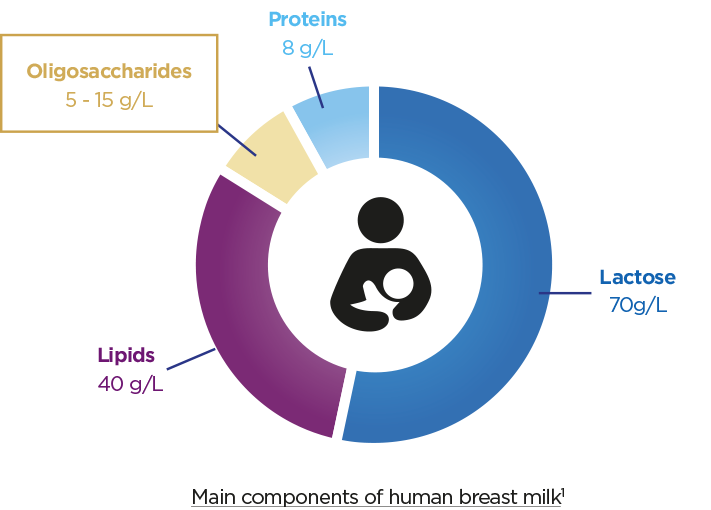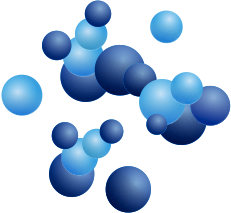More than 200 different oligosaccharides have been identified in human milk. They have an overall ‘prebiotic’ effect that aids the development of a baby’s gut microbiota, brain and immune system.
Prebiotic oligosaccharides are an abundant bioactive component found in breast milk. Although the protective effect of breastfeeding is due to many bioactive components, naturally occurring oligosaccharides in breast milk appear to play a key role in the development of the infant brain, gut microbiota and immune system1.

Human Milk Oligosaccharides (HMOs) represent the third largest component of milk solids after lactose and lipids1. HMOs in human milk have a size distribution of 90% short chain and 10% long chain6.
More than 200 different oligosaccharides have been identified in breast milk5. They have an overall ‘prebiotic’ effect2 in babies; prebiotic oligosaccharides help shape a healthy gut microbiota in infants by promoting the growth of beneficial bacteria (e.g. bifidobacteria)1. These prebiotics travel intact through intestines and are fermented by the beneficial bacteria that reside there. Postbiotics are then produced by this natural fermentation process in the intestine, including short-chain fatty acids (SCFA)3, which help maintain the intestinal barrier and whose influence on immune function has been demonstrated4.

HMOs have many benefits for infants2 as they:
- Protect against infectious diseases by binding to pathogens
- Support the immune system through a direct effect on immune cells
- Support the development of a healthy gut microbiota thanks to their prebiotic effect that promotes the growth and activity of beneficial bacteria
- Support brain development in infants.
References
- Zivkovic, Angela M., et al. “Human milk glycobiome and its impact on the infant gastrointestinal microbiota.” Proceedings of the National Academy of Sciences 108.Supplement 1 (2011): 4653-4658.
- Jantscher-Krenn, E., and L. Bode. “Human milk oligosaccharides and their potential benefits for the breast-fed neonate.” Minerva Pediatr 64.1 (2012): 83-99.
- Tackoen, M. “Breast milk: its nutritional composition and functional properties.” Revue medicale de Bruxelles 33.4 (2012): 309-317.
- Wopereis, Harm, et al. “The first thousand days–intestinal microbiology of early life: establishing a symbiosis.” Pediatric Allergy and Immunology 25.5 (2014): 428-438.
- Urashima, Tadasu, et al. “Human milk oligosaccharides as essential tools for basic and application studies on galectins.” Trends in Glycoscience and Glycotechnology 30.172 (2018): SE51-SE65.
- Boehm, G., et al. “Prebiotic concept for infant nutrition.” Acta Paediatrica 92 (2003): 64-67.
BA19-485
